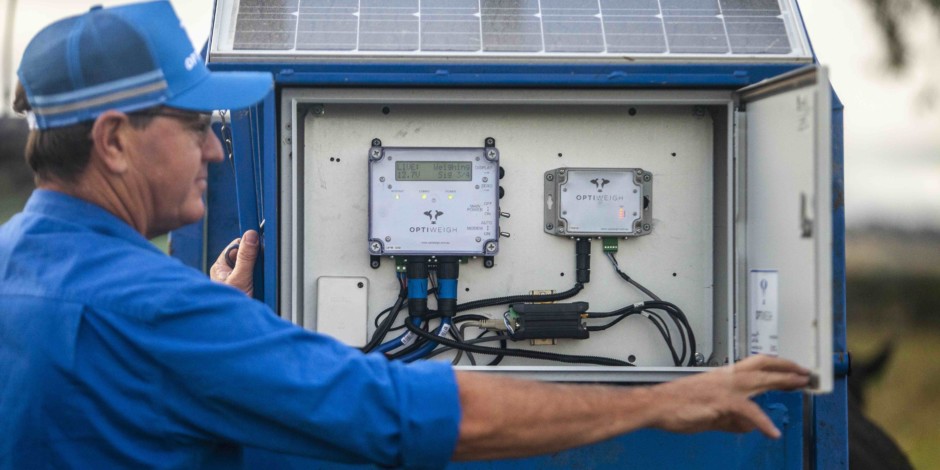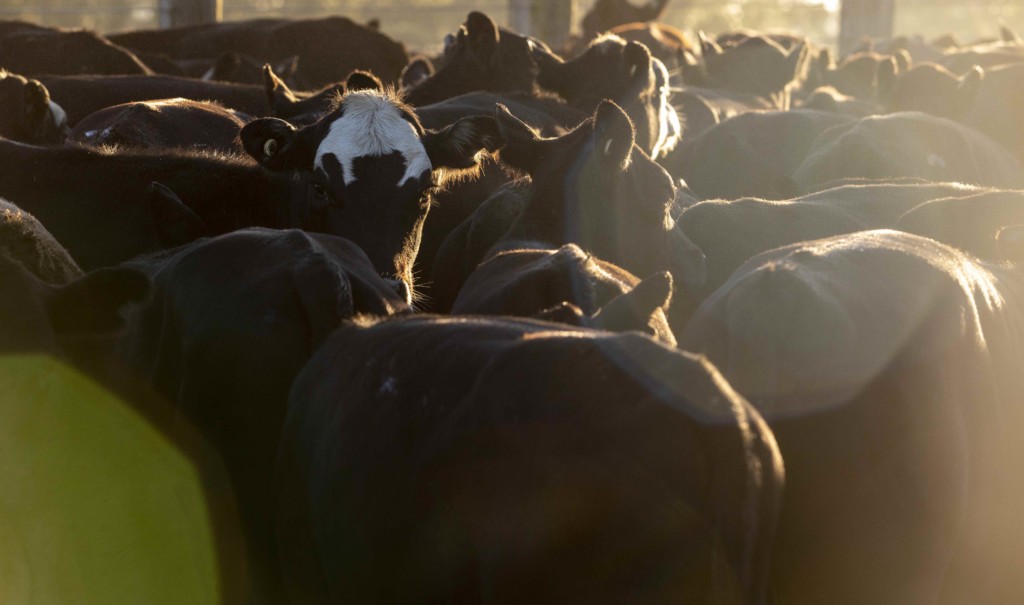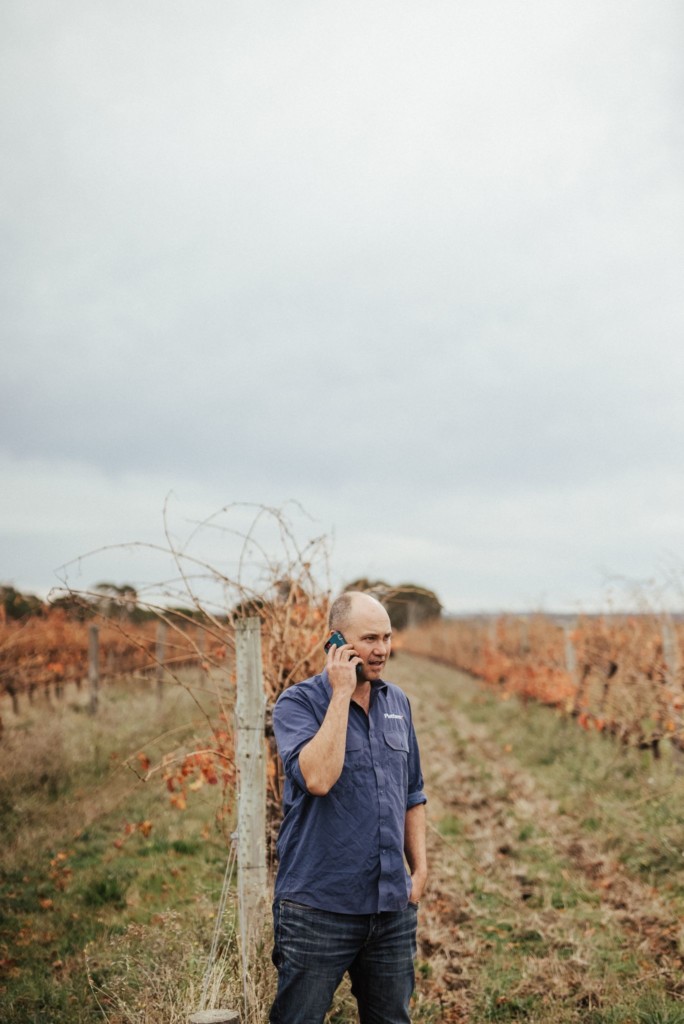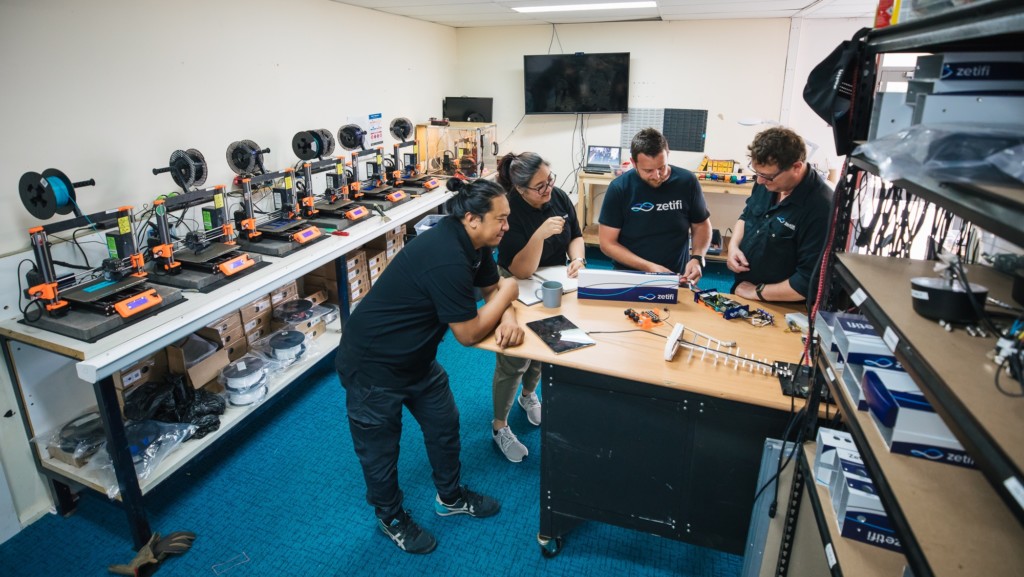Data interoperability and the digital revolution of agriculture
Data has become the source of truth for agricultural performance and productivity on-farm. Ensuring its protection and usability is key to maximising its value for farmers and agritech vendors. Here agritech founder and industry expert, Oli Madgett shares his views on building consensus on data specifications and why it’s so important for Australia.
 Optiweigh tracks livestock weight data to help producers make better on-farm decisions and drive productivity. Photography by Mike Terry
Optiweigh tracks livestock weight data to help producers make better on-farm decisions and drive productivity. Photography by Mike Terry
As a part of the digital revolution of agriculture, advances in digital technology are making it easier to capture and manage data, and importantly, gain insights. Farmers, agronomists, and agritech providers are actively developing and exploring ways to apply new technologies that allow industry stakeholders to make better decisions and improve their operations.
But we’re in the early days of this revolution, and people from all sectors of the agricultural community are facing obstacles as they seek to make the most of technological advancements, principally around data sharing.
As we approach a junction on this journey, one of the directions we can take is to build community consensus around agreed data specifications and standards, opening the way for the acceleration of innovation in the agritech space and across the supply chain.
Andrew Cooke, Founder and Managing Director of international agricultural software and digital solutions business, Rezare Systems has the lived experience of working globally for more than a decade towards resolving the commonly expressed frustration of the agrifood ecosystem – largely, the difficulties of moving data between systems and platforms. There can be a number of underlying causes of why systems, “don’t just talk to each other,” including the misaligned business drivers for agritech and data providers; lack of available global standards; and just the practical difficulty and capacity needed to resolve current interoperability challenges.
While there are instances where agritech systems appear to be actively designed to stymie cross-platform communication, often in an effort to ensure customer retention – technical problems are a more typical barrier. Each existing system has been developed in relative isolation, so even when agritech providers do want to make it easier to share data between platforms they can find it difficult in the absence of an established standard. For example, what one platform calls a field the other defines as a paddock, and what another may refer to as a unit another may refer to a sheep.
RELATED: Farm data and doing what’s right by the farmer
Andrew points to the fact that you can always figure out how to make two things work together if the respective developer teams get together, but that creating 1-to-1 links doesn’t solve problems at-scale. The real challenge is what happens when you need to integrate with dozens of bits of software, or with developers in different time zones, and this is where documentation and common standards are helpful. In some industries, there are situations where one company is the master of all data, and they can set the standards, but this hasn’t been the case in agriculture.
RELATED: The benefits of the farmer ‘tech-stack’
Digital specialist, Andrew Skinner has played an integral role in developing the future data systems that support Australia’s red meat traceability system – where compliance relies on multiple players and collaboration – to ensure Australia’s $28 billion livestock industry can ‘stand by what it sells’.

Photo by Mike Terry
Andrew recently founded a digital and data systems consultancy, More Than Machines, after previously leading digital and data programs at Meat & Livestock Australia as its Chief Data Officer, while also working with FrontierSI on developing standards around Agricultural Property Definitions. This work is a great example of both the challenges and opportunities around putting in place the critical building blocks for data interoperability.
The grower perspective of digital mapping and its long-term benefits
As a grape grower, we are increasingly being asked for digital maps of our vineyards, for example as a part of being certified by Sustainable Winegrowing Australia, or in order to access spatial data such as NDVI imagery. Accurate and useful digital maps don’t currently exist in a format that’s easily reusable for the majority of growers – it’s another thing that’s put in the ‘too-hard basket’, or is just irritating to re-draw if you do want to start using many tech tools.
RELATED: Oli Madgett brings tech to the vineyard and beyond
Although it’s often the stick of compliance that drives the development of standards, when I spoke with both Andrew Skinner and Andrew Cooke as part of an evokeAG. podcast exploring data interoperability, they both saw the carrot in terms of production improvements and efficiencies as the biggest longer-term win for the industry from focusing on reaching consensus around what clearly defines data specifications.

Oli Madgett at Madgett’s Block vineyard in South Australia’s McLaren Vale region. Photo by Solomon Scopazzi.
Just from a viticulture perspective, we’ve been focusing as an industry on creating standards around accurate and interoperable digital vineyard maps, which will be one of the drivers of increasing automation, whether that be automatic collection of data as you drive down a row, auto-steering you down a row, or watching your autonomous vehicle drive itself down a row merrily working away.
New Zealand seeks collaborators to explore spatial data interoperability
In New Zealand, progress with shared data specifications in agriculture have been driven by a combination of the compliance burden of having to create Farm Environment Plans, as well as the industry transformation plan that Agritech New Zealand are leading. As a part of this Andrew Cooke is leading a project around spatial data interoperability, which is currently in its second phase and are actively looking for technical collaborators across both NZ and Australian ecosystems, with all the outputs of the project being openly published via GitHub. The initial report from the first phase can be found here.
Both Andrew Cooke and Andrew Skinner, have stressed the importance of not reinventing the wheel just for Australia and NZ, and leveraging international standards, in this case with ensuring alignment with the work of the Open Geospatial Consortium.
It’s often pointed out that human interoperability is harder to achieve than technical! The act of collaboratively developing data specifications allows us to build consensus, so that there is less room for confusion and misunderstanding when we communicate. Inevitably, when innovation and technical solutions are developed in isolation from each other, as has been the case so far, there will be differences in how people conceptualise and describe things, and the very process of developing and documenting common specifications facilitates successful communication.
Reaching consensus on data standards, a valuable step in driving innovation

Wireless networking startup, Zetifi working together in Wagga Wagga, NSW to build scaleable connectivity solutions for farmers. Photography by Jack of Hearts.
Andrew Skinner sees Australia’s Research Development Corporations (RDCs) playing an important role in creating the spark around data standards, with the process of developing early technical specifications and prototypes to prove things out, also being a valuable step to build into the innovation process.
From an agritech vendors’ perspective, having well-defined, readily accessible, and agreed data specifications in place will accelerate innovation as it enables the team to build applications they feel confident will meet community needs.
Having data standards in place gives vendors a head start; freeing up time, energy, and investment capital to solve more specific industry problems. If we, as an agrifood tech community, don’t solve these problems around creating data standards, someone else will – and we might not like their solution. There is a risk that the industry-standard that’s settled on could be paywalled, locking out some users; not fully standardised, or standardised on the wrong things; or optimised for vendors not growers.
While we’re at this junction, we now have a unique opportunity to embed the priorities and logic of farmers as well as developers into the data specifications that vendors build up from, and going in that direction ultimately benefits everyone.
Enjoyed this story? Want to learn more about the Asia Pacific region’s innovative agrifood tech ecosystem? Sign up for our newsletter here and receive fresh stories about global leaders, farmers, startups and innovators driving collaborative change.
